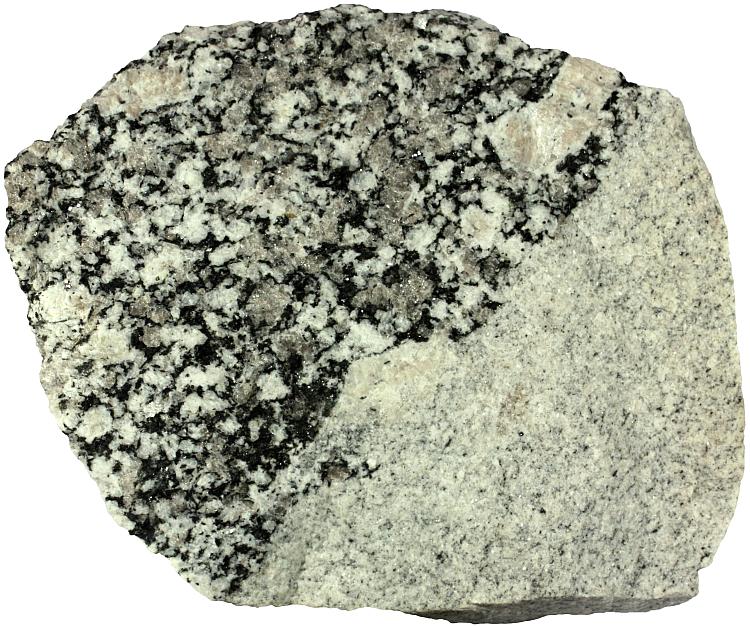Aplite is a fine-grained igneous rock. Most aplites are granitic in composition — chief constituents are feldspars and quartz. Aplite is associated with granitic rocks that are similar in composition and they may be associated with pegmatites.

Granite (upper left) and aplitic vein (lower right) cutting through it. Aplite and granite are similar in composition but differ greatly in grain size. Granite formed before and its crystals as it seems had ample time to grow. The vein intruded the already solidified granitic rock body and solidified quickly due to rapid heat loss. The width of the sample from Switzerland is 12 cm.
Quartz and feldspar are often intergrown in aplite to form a graphic texture but this is not seen with the naked eye due to very small grain-size of aplitic rocks. Aplites form narrow dikes and veins which are generally less than one meter in thickness and often much less than that. Aplitic veins are sometimes only centimeters in thickness. Aplites occur either within granitic intrusions or within countryrock surrounding the granitic intrusion. In either case it forms a narrow intrusive rock body within other rocks. Aplite is fine-grained because it solidified relatively quickly due to rapid heat loss to the surrounding cooler countryrock.
Aplites are often associated with pegmatites. Pegmatitic magma is rich in volatile constituents which makes it significantly less viscous. Chemical elements are relatively free to move in such magma which means that once formed crystals can keep growing because necessary building blocks are right there. When such magma loses its volatiles because they migrate higher, it gets much thicker and solidifies as normal granite does. However, because it loses heat rapidly, very fine-grained texture forms instead of normal appearance of granitic rock.
It is very helpful for every student of geology as me.